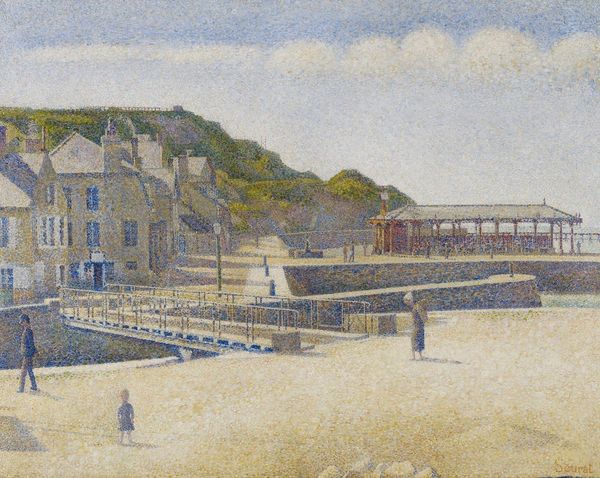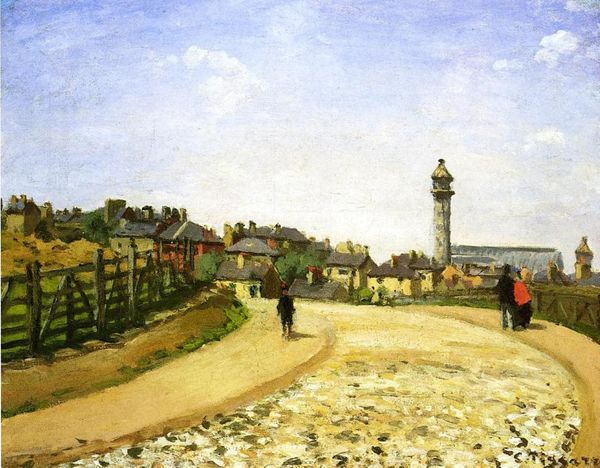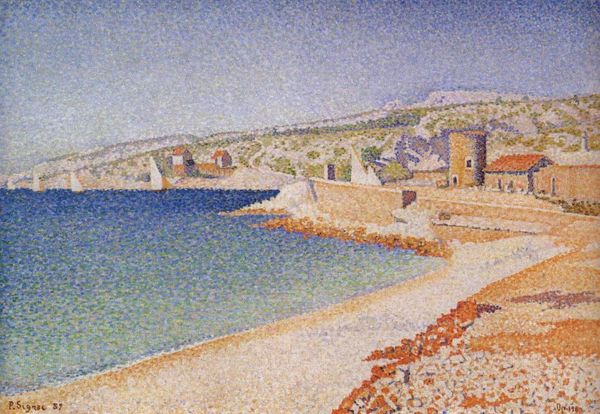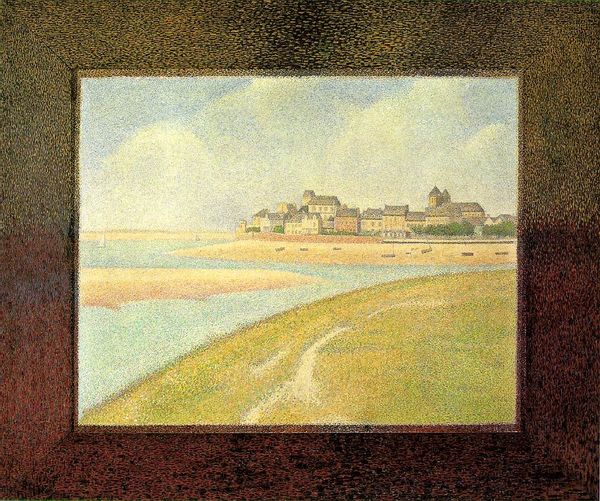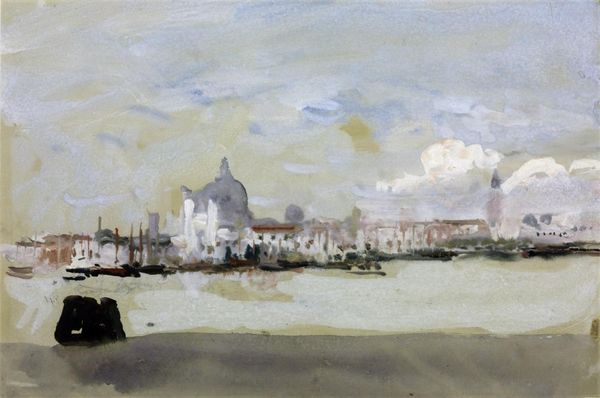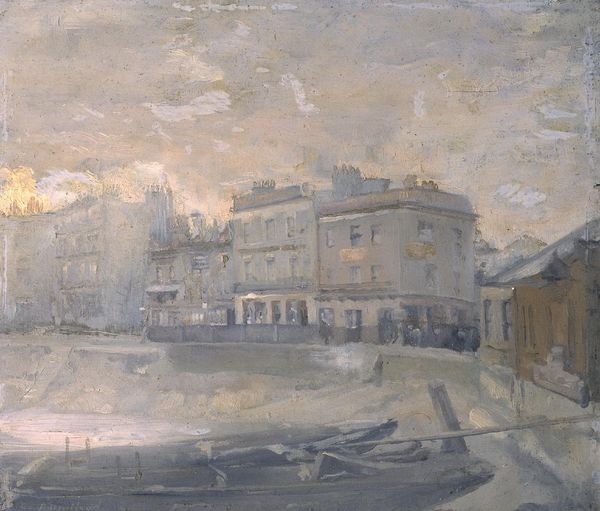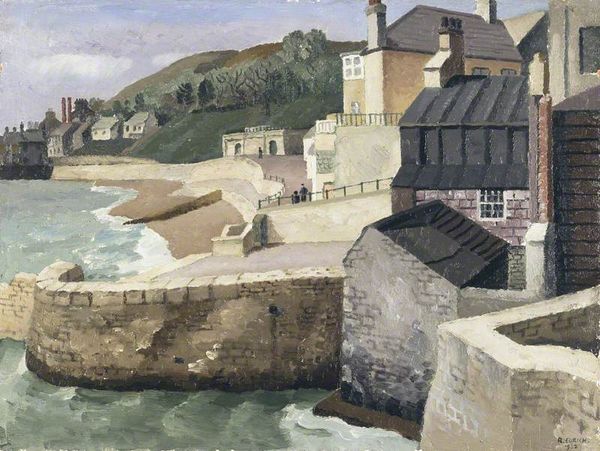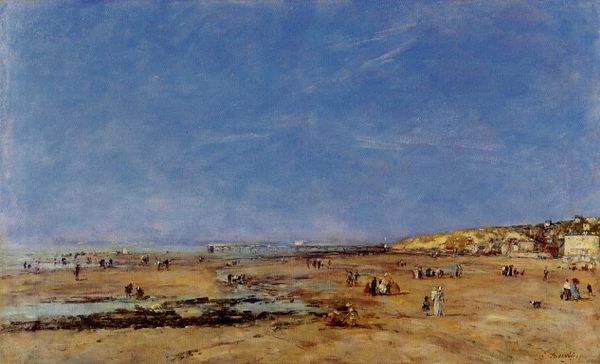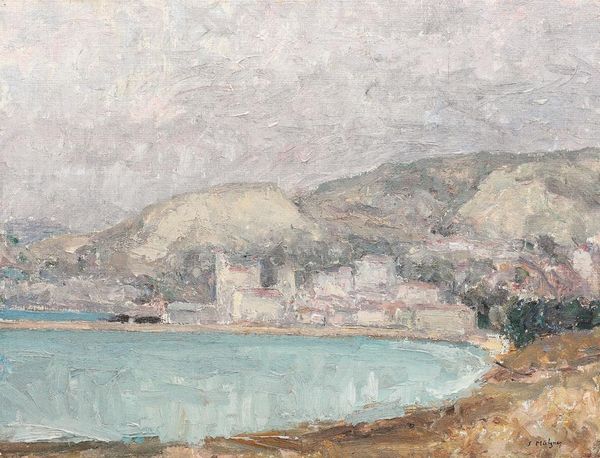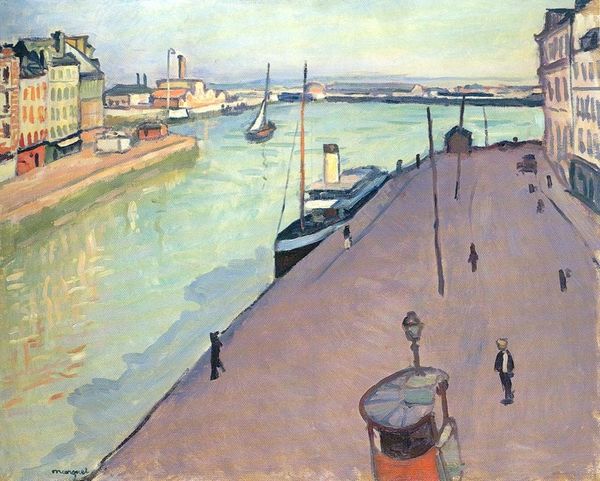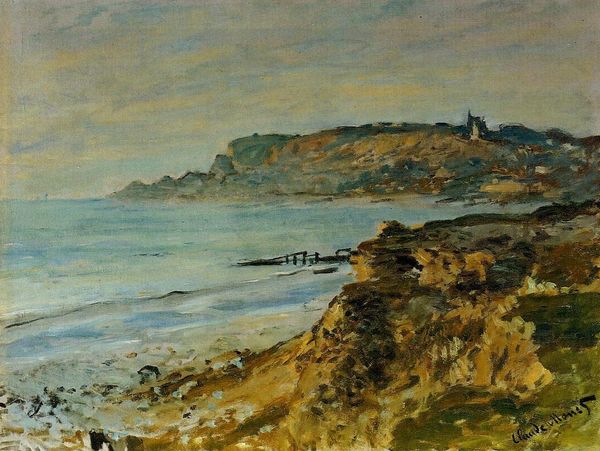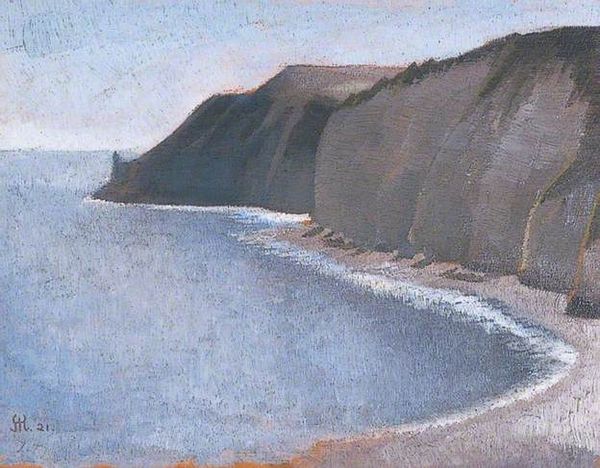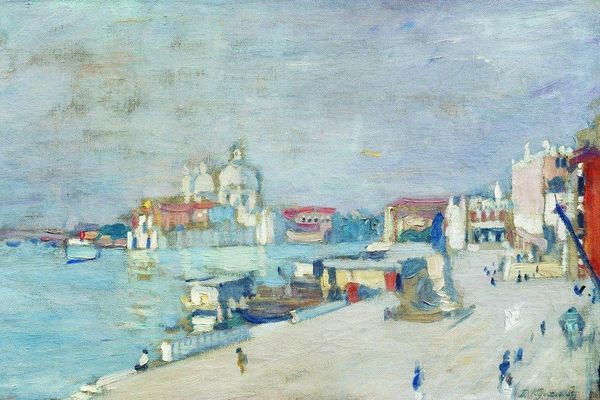
plein-air, oil-paint
#
cliff
#
plein-air
#
oil-paint
#
landscape
#
charcoal drawing
#
oil painting
#
acrylic on canvas
#
cityscape
#
modernism
#
watercolor
#
realism
Copyright: Public domain
Editor: So, here we have Graham Bell's "Dover Front" from 1938, an oil painting currently residing at Tate Britain. The subdued palette and somewhat grainy texture give it a strangely quiet, almost melancholy mood, don't you think? What stands out to you about this piece? Curator: I see a deliberate portrayal of Britain on the cusp of war, a nation aware of its geographical vulnerability. Bell's choice of Dover is potent: it’s the literal frontline, facing Europe. What's interesting is that it's not depicted as a bustling port, but rather a somewhat empty, quiet place. Consider the implications of choosing such a historically charged place like Dover, rather than say a market scene from London? Editor: I hadn’t thought about the location that way. I just saw a calm, unassuming town. You’re suggesting its very calmness is a political statement? Curator: Precisely! This wasn't just any landscape painting. Given Bell's social circle of left-leaning artists and intellectuals, this calm can be viewed as an intentional contrast to the rising tension of the period. Also notice the absence of explicitly patriotic imagery – no flags, no soldiers. This choice itself speaks volumes. Editor: So, rather than a painting about Dover, it’s a painting about Britain, using Dover as a symbol? I see it differently now! Curator: Yes, art is always created and perceived in its context, shaped by and also shaping public perceptions and politics. So, understanding art history means constantly asking: why *this*, why *now*? What effect did this have? Editor: This gives me so much to think about. I’ll never look at a landscape the same way again! Curator: Indeed. The seemingly simple choice of subject reveals layers of social commentary when viewed through a historical lens.
Comments
No comments
Be the first to comment and join the conversation on the ultimate creative platform.
